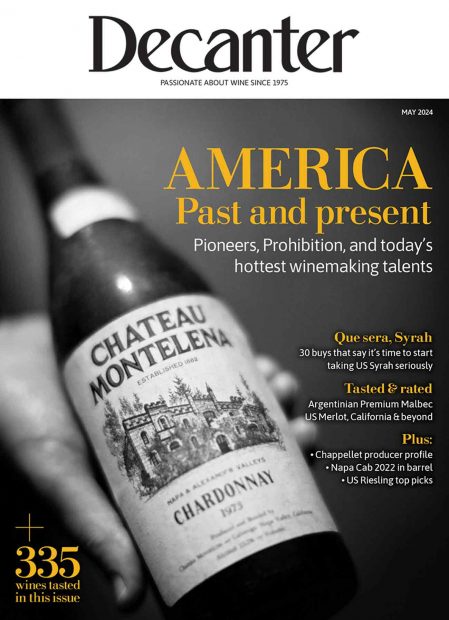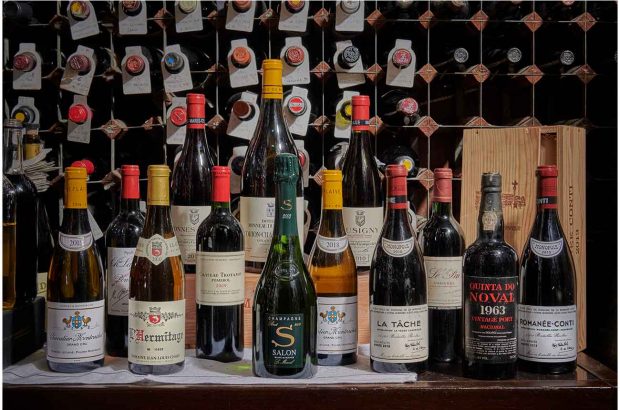Jane Anson goes beyond the recent cache of international awards to see what's been happening on the English Pinot Noir scene, and whether Burgundy should be worried.
I’ve been conducting field tests into English global warming patterns for the past few decades, so I can tell you definitively that I’m the least surprised person to hear the country’s red wines are finally winning awards in international competitions.
Are we really saying that just as Champagne producers have stopped smirking at the idea of English sparkling wine, now the Burgundians are going to have to follow suit?
Okay so the field studies, dating back to the late 1990s, involve bank holiday weekends at various campsites around the UK. I’m remembering numerous sodden nights in Wales, Dorset, Norfolk, North Yorkshire, Derbyshire, the New Forest and others that I seem to have blocked from my memory banks.
It’s been at least five years since the entire weekend has been spent fearlessly trying to spark a flame for cooking under torrential rain, and this year, in Sussex, the first time that packing nothing lighter than jeans and jumpers was a serious blunder.
All the same, you don’t need to be Marco Pierre White to be just a little sceptical about future prospects for the recent crop of award-winning Pinots. Are we really saying that just as Champagne producers have stopped smirking at the idea of English sparkling wine, now the Burgundians are going to have to follow suit?
With this in mind, I was trying to temper my confidence when pulling up at Bolney Estate on a sunny day in late August. It was Friday 25th, with temperatures climbing towards 30°C at the start of what was to be the hottest bank holiday on record. The welcoming terrace that juts out of Bolney’s visitor centre over the vineyard was full of locals enjoying the benefits of what owner Sam Lintner describes as the earliest-ripening vineyard site in Sussex.
Pinot Noir, to be fair, has been a big deal in the UK for quite some time now. It’s the second most planted variety in the country, with 323ha as of 2016, accounting for almost one quarter of total plantings (as a comparison Pinot is 38% of plantings in Champagne). But in a country where sparkling accounts for 70% of all wines, and reds and even rosés make up just 10% of bottles, it’s a rare winemaker who chooses to hold back on their precious Pinot grapes and then run the risk of them not ripening sufficiently for still wines. The famously delicate skins can easily fall prey to rot in September rains and reaching the right sugar/acid balance is notoriously tough for winemakers world over.
Bolney has been happily running the gauntlet for 45 years. One of the oldest estates in the UK, dating back to 1972, Lintner remembers her parents with a plot of Pinot Noir right back in the early days, alongside the more usual plantings of German grapes and hybrids such as Müller Thurgau, Reichensteiner, Madeleine Royale and Seyval Blanc.
‘I grew up on the vineyard and remember the Pinot ripening well here,’ Lintner told me with a wide smile, heading out of a meeting as I returned to the visitor centre from the vines. ‘It somehow got forgotten about over the years, but I’ve been a Pinot nut for as long as I can remember. And as soon as I was told that it would be impossible to grow well, I knew I was going to have to prove people wrong. I moved the grapes to our warmest spot, where they are now, and got a little bit fanatical about what we could tease out of them’.
‘The improvement in the weather is only part of the story,’ says Charlie Holland, winemaker at Gusbourne in Kent and the man responsible for another award-winning Pinot Noir. ‘The improvement in vineyard management and cellar practices is far more important’.
‘We can all get carried away with the benefit to English wine of global warming,’ he says, unaware that he is trashing my field study, ‘and it’s true that the last few years have seen decent September harvests, but we shouldn’t underestimate the power of serious winemaking alongside it. Still red wines are only 5% of what we do at Gusbourne, but it’s something that we are quite proud of. It’s taken time to understand the grapes, when to pick them, how to handle our style. Historically we made the Pinot from a number of different blocks and would simply choose the ripest parts for the reds. It wasn’t exactly strategic. But today we have identified the clones that work best – mainly classic Dijon stuff, and a few good German clones – and have started dropping up to one-third of the fruit in the vineyard to help sugar accumulation and concentrate flavours naturally. We have learnt to help things along now, to get acidity down and develop clean fruit flavours’.
‘The key to making an English Pinot,’ says Lintner, ‘is not to try to make it taste like anything else. If you try to work the skins too much to get a deep colour, it’s game over, because you won’t be able to avoid bitterness. You’ve got to embrace a lighter, fresher style’.
For me [English Pinots] are somewhere closer to a good quality AOC Bourgogne Rouge right now
Bolney, unlike Gusbourne, is unusual in making still wines a key part of its offering – and will continue to do so even after the £2 million investment announced in October 2016 that is set to more than double production to 300,000 bottles per year. Today the production is evenly split between still and sparkling wines, and although the sparkling is hugely successful with appearances in British Airways first class, they have no plans on changing that split.
‘When it comes to exporting, it’s all about the sparkling wines,’ Plumpton graduate and guide Nick Hutchinson tells me as we stand among the Pinot vines (trellised high on their sandstone soils to capture drying breezes, and to avoid the roe deer that like to feast on them). ‘But producing quality still wines gives us a point of difference from our neighbours. Getting the Pinot Gris into Wimbledon in 2015 and 2016 made a big impact, and will hopefully provide a boost for the rest of our still wine range’.
They ferment the Pinot here in 500 kilo stainless steel vats, and keep the skins submerged with the juice just long enough to concentrate flavours (they used to shortcut to this by draining off excess juice, saignée style, but as with Gusbourne are learning instead how to work the vines to bring the flavours in right from the start).
We are still a long way from open season on English reds – the Merlot that Bolney experimented with, for example, was ‘disastrous’ and quickly grubbed up, and I was less impressed with the spicy, darkly-fruited Rondo and the sparkling red Dornfelder that I tasted. It remains the still white varieties, notably Bacchus, that offer the most promising future for the country’s non-sparkling wines, but there’s an unmistakeable slatey minerality to these Pinots that is highly appealing. Having tasted through a few, don’t expect an Oregon or Central Otago style. For me they are somewhere closer to a good-quality AOC Bourgogne Rouge right now. But that’s already an impressive achievement – and several winemakers told me that the Cool Climate Wine Conference, held in Brighton in May 2016, helped inject a new sense of optimism in the UK’s Pinot producers.
‘Successful still wine is still a new thing,’ says Holland. ‘But it’s hugely exciting. We don’t want to move away from sparkling, but as our vineyards age the grapes will continue to gather the complexity needed for successful still wines. We don’t want it to be a distraction, but look at the way New Zealand developed – at first it was all about Sauvignon Blanc, then other styles came in as the industry matured. We think it can be the same for us’.
Two English Pinot Noir wines to try
Bolney Wine Estate Vineyard Pinot Noir 2016
I tasted this at the estate, then again around the campfire, and can easily see why it sells out as soon as it’s bottled. It has a lovely sweetness to it and yet is delicate and light with barely-there tannins. Very attractive now but should hold on a few years. Tangy summery red fruits abound, with a softly floral edge. 12%, unoaked. 90 points/100
Gusbourne Pinot Noir Boot Hill Vineyard 2015
Happy to report that I had a picnic under the oak trees next to Boot Hill vineyard last year, and can attest to its gently sloped vines benefitting from the warming afternoon sun. Tasting this back in Bordeaux, the delicate fresh and floral aromatics are striking. The careful extraction has paid off in savoury but clearly defined redcurrant and raspberry fruits, set off by an appealing smokiness. 12%abv. 91





